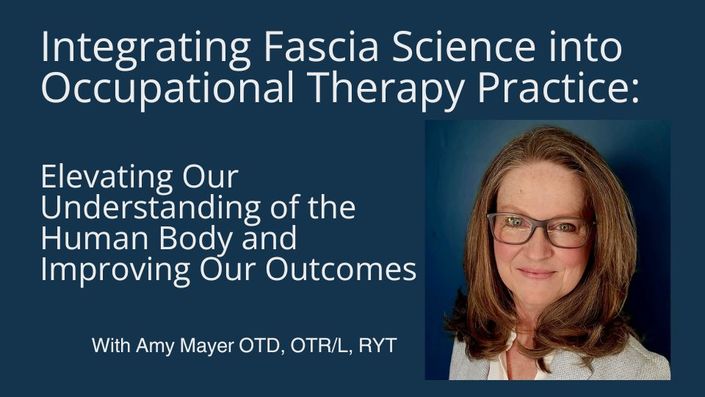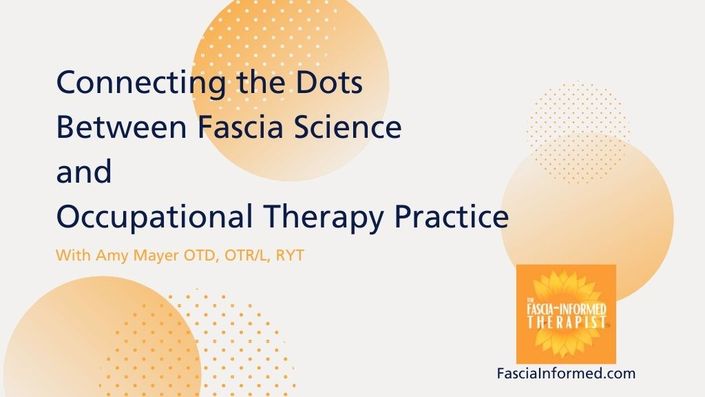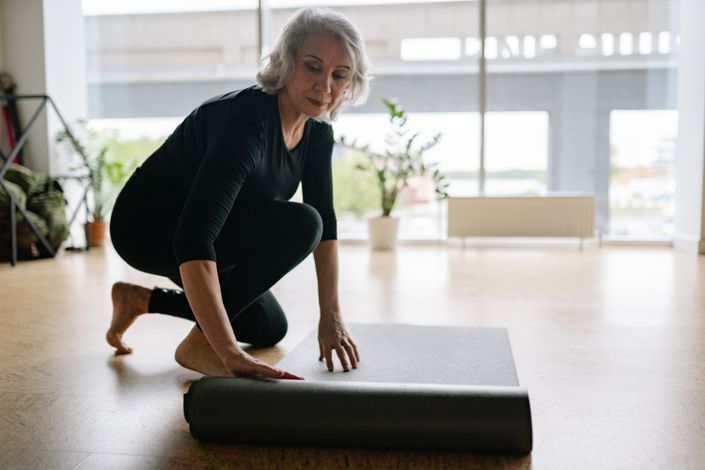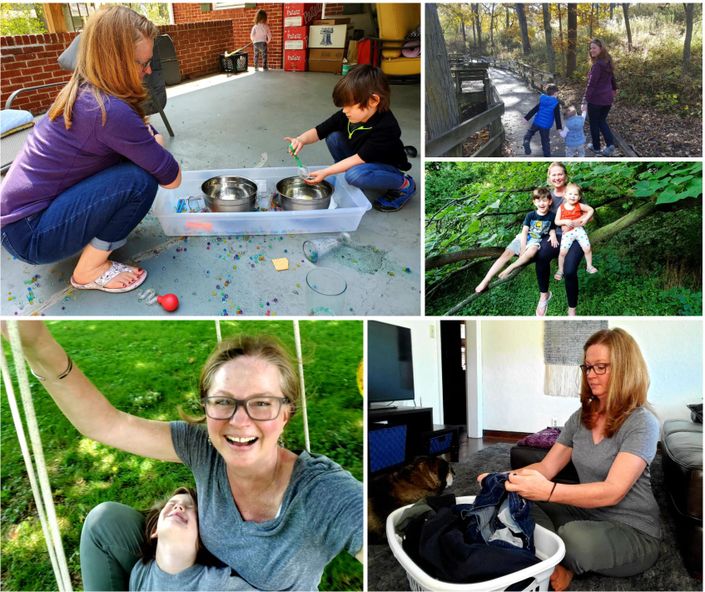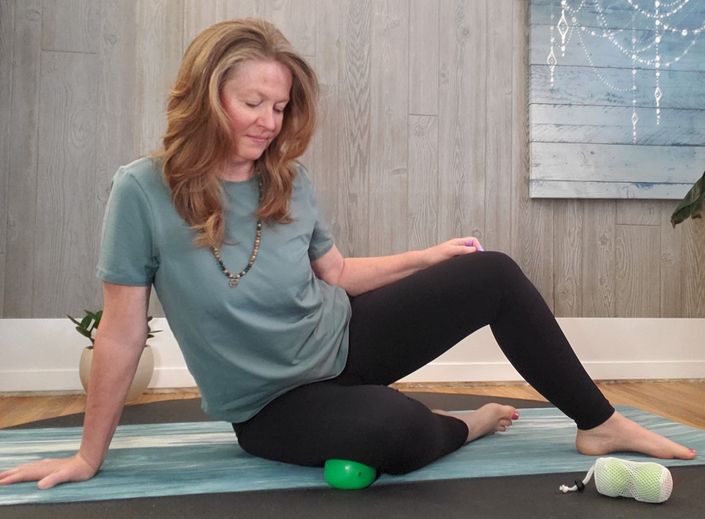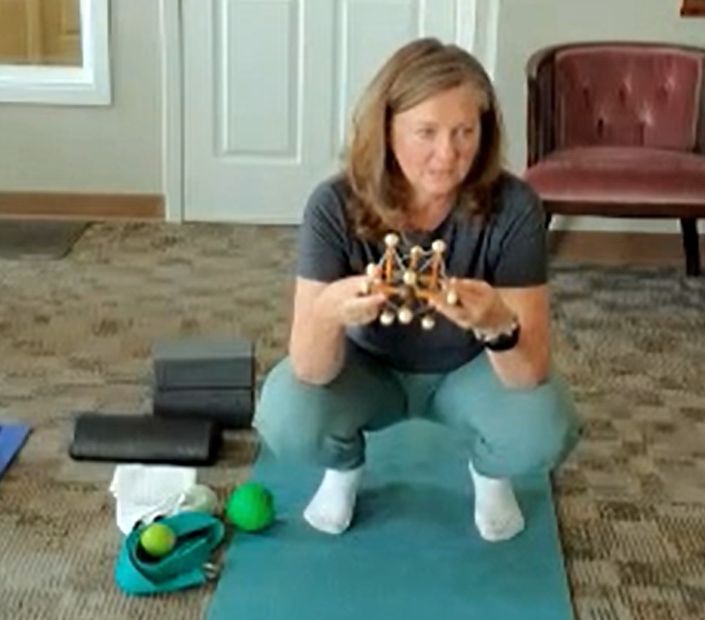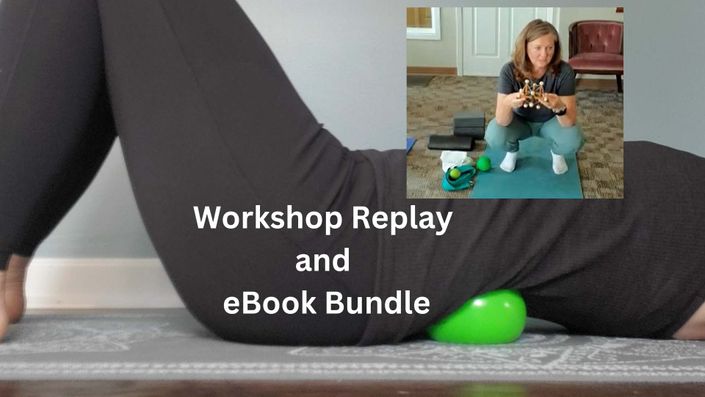Treating posture doesn't need to be complicated, but it does need to be objective.
Let us show you how.
Poor Posture is an Epidemic
that is Impeding Health and Function
in People of All Ages
As occupational therapy practitioners, we are meticulous when it comes to the posture of our dependent patients who are in wheelchairs and cannot position themselves. But what about all our other patients?
Flexed spines, asymmetrical shoulders, and forward heads are just the beginning of the problems we are seeing in our modern society. As a result, we are seeing a surge in patients with pain and difficulty with mobility earlier in life.
Pain, posture and mobility issues also make it more difficult to recover from injuries and illnesses.


How does posture affect the fascia and health?
The fascia is constantly remolding itself and will take the shape of the postures we prefer. If our posture is less than ideal most of the time, our fascia will get thick and tight in areas that are not intended to be thick and tight. As a result, we become stuck in poor alignment.
A common example of poor posture that significantly affects the fascia is forward head posture. When the head is chronically forward from the body, thick layers of tight fascia will form on the upper back and neck keeping us permanently in this position. This extra thickness and tension will often result in pressure on muscles, nerves and circulatory structures causing decreased blood flow and pain.
Functionally when the head becomes stuck in this forward posture, the head cannot turn as designed and the visual system cannot detect the horizon as designed. We also become off balance when the head is stuck in a forward position.
The good news is that with knowledge of what good posture really is as well as an understanding of the fascia, we can reverse the problem and restore posture and health.
Stand up Straight!
Ideal posture goes FAR beyond just standing up straight.
Posture and alignment have been components of various treatments, like physiotherapy, for a long time, but significant issues persist. The biggest is that there is no standard set of measures for evaluating body position.
Well, there is, actually, but the language is so unspecific that even those trained in the science of anatomical position have become very casual in their assessment and as a result have lost the precision that the body’s geometry truly requires.
-Katy Bowman, Biomechanist and Author (2016)
This course provides you with a checklist of posture and alignment points. You'll learn exactly how to identify each point and how to document them.


Good posture has a direct relationship to health and function!
Most people have no idea what it really means to have good posture and how important it really is for health and performance.
Good posture has many benefits beyond basic health for people of all ages.
- Increases resistance to injury at all ages.
- Increases athletic performance and the ability to exercise safely.
- Reduces pain.
- Allows the body to heal more quickly from pain or injury.
- Improves confidence.
- Decreases wear and tear on the joints.
- Increases the ability to use our body as it was designed well into older adulthood.
- Improves the functioning of our organs.
- Improves the ability to breathe deeply for better lung function.
- Improves balance.

Kids and Teens
Kids are growing up with devices which is creating posture concerns even in toddlers. This course will help you help parents and educators understand what good posture really is and how to help kids understand how posture affects their health and function.

Adults
We aren't meant to sit or stand still for hours. When we must, it is critical we understand how to best use our bodies. Our posture both at the desk, car, assembly line, and everywhere else, can profoundly influence our health both in the moment and over time.

Older Adults
Improving posture improves health, safety, and quality of life. Improvements in posture can be made at any age. This course will show you how and help you convince your patients how important it is!
If you are a practitioner who cares about the details of function and want to take your practice to the next level, integrate posture into everything you do!
Check Out the Curriculum
- Introduction
- Cultural and Environmental Influences Self-Assessment
- Marketing and External Influences on Your Posture
- Prolonged Sitting and Your Posture
- Stress, Anger, Mental Health, and Your Posture (10:22)
- Cultural and Environmental Influences Self-Assessment Part 2
- Key Points from Outside Influences on Posture
- Reflection
- Posture First, Then Alignment Review
- Creating a Great Posture Home Base
- Changing Your Environmental Influences
- Prepare Your Strategy
- The First Steps to Posture Improvement: The Feet
- Improving Posture Above the Feet: Working Upwards
- Fascia-Focused Stretching for Alignment Correction: The Basics
- Incorporating Fascia Focused Stretching: Lower Body (20:04)
- Incorporating Fascia Focused Stretching: Upper Body (34:06)
- Tummy Time
- The Long Term Plan
- Key Points From How to Improve Your Posture & Alignment
- Reflection
Meet Your Course Instructor
After teaching my clients what good posture really consist of and why it is so important, I often hear, "Why hasn't anyone ever told me this?!".
I'm passionate about great posture because it improved my life significantly. As an occupational therapist, myofascial practitioner, ergonomics and posture expert, and yoga teacher I find helping people practice better posture during daily life makes a huge difference in their health and ability to heal from pain and injury. Those who make posture improvement a priority heal faster and stay pain free.
I've been doing this work for 30+ years and love that I'm able to offer my expertise to everyone through this online course.
I also worked as an academic for 20 years teaching phys rehab content. I LOVE teaching occupational therapy practitioners new skills! We are always eager to learn more so we can help the clients we care so much about!

I love teaching other professionals about posture (and movement, and fascia)!
- Dr. Mayer is a great presenter. Always gets people out of their seats and engages audience.
- Very entertaining and great example/visuals.
- Excellent hands-on activities and application of assessments.
- Would love info on further CEU’s or certificates with fascia and posture.
- Excellent! Made it so relevant to overall health and makes me what to learn more.
-
Love Amy and her presentation style! So clinically relevant for all settings.
A Traditional Approach Through the Lens of Fascia
As a therapist who is grounded in science and occupation-based theory, I take a traditional approach to occupational therapy practice, but I look through the lens of fascia science.
The fascial system is a body system we must understand in order to fully understand the human body and how it functions. The fascial system is up to ten times more innervated than our muscular system. This means our brains are ten times more interested in our fascia than our muscular system. This does NOT mean our other systems are not important. It speaks very loudly that this system is important!
Understanding the fascial system and its intricate relationship with all our other body systems is a critical layer to understanding health and function. In the literature, the fascia is often referred to as the environment of the body and all the systems within it. If your fascia is healthy, your other body systems have the environment to function well.
In all my courses, I overlay that science of fascia to provide a new and innovative look at approaching occupation therapy practice.
All Practitioners are Welcome
This course is designed for occupational therapy practitioners. However, we welcome all health and wellness practitioners. With over 80 million people in the United States with this issue, there is enough room for everyone.
If you are not an occupational therapy practitioner, this course may still give you several ways you can support your clients with TMD. It may also help you to make referrals. It is up to each practitioner to know their scope of practice and the appropriateness of applying the concepts and techniques in this course.

